11 巻
選択された号の論文の22件中1~22を表示しています
- |<
- <
- 1
- >
- >|
特集
-
原稿種別: 論文種別:特集
2011 年 11 巻 p. 1-3
発行日: 2011年
公開日: 2012/01/06
PDF形式でダウンロード (393K) -
原稿種別: 論文種別:特集
2011 年 11 巻 p. 5-11
発行日: 2011年
公開日: 2012/01/06
PDF形式でダウンロード (580K) -
原稿種別: 論文種別:特集
2011 年 11 巻 p. 13-19
発行日: 2011年
公開日: 2012/01/06
PDF形式でダウンロード (1539K) -
原稿種別: 論文種別:特集
2011 年 11 巻 p. 21-24
発行日: 2011年
公開日: 2012/01/06
PDF形式でダウンロード (1466K) -
原稿種別: 論文種別:特集
2011 年 11 巻 p. 25-32
発行日: 2011年
公開日: 2012/01/06
PDF形式でダウンロード (2933K) -
原稿種別: 論文種別:特集
2011 年 11 巻 p. 33-36
発行日: 2011年
公開日: 2012/01/06
PDF形式でダウンロード (775K)
トピックス
-
原稿種別: 論文種別:トピックス
2011 年 11 巻 p. 37-40
発行日: 2011年
公開日: 2012/01/06
PDF形式でダウンロード (584K)
原著
-
原稿種別: 論文種別:原著
2011 年 11 巻 p. 41-45
発行日: 2011年
公開日: 2012/01/06
PDF形式でダウンロード (669K) -
原稿種別: 論文種別:原著
2011 年 11 巻 p. 47-50
発行日: 2011年
公開日: 2012/01/06
PDF形式でダウンロード (546K) -
原稿種別: 論文種別:原著
2011 年 11 巻 p. 51-56
発行日: 2011年
公開日: 2012/01/06
PDF形式でダウンロード (1055K) -
原稿種別: 論文種別:原著
2011 年 11 巻 p. 57-63
発行日: 2011年
公開日: 2012/01/06
PDF形式でダウンロード (1018K) -
原稿種別: 論文種別:原著
2011 年 11 巻 p. 65-70
発行日: 2011年
公開日: 2012/01/06
PDF形式でダウンロード (1225K)
報告
-
原稿種別: 論文種別:報告
2011 年 11 巻 p. 71-75
発行日: 2011年
公開日: 2012/01/06
PDF形式でダウンロード (1166K)
研究助成論文
-
原稿種別: 論文種別:研究助成論文
2011 年 11 巻 p. 77-82
発行日: 2011年
公開日: 2012/01/06
PDF形式でダウンロード (1000K)
症例報告
-
原稿種別: 論文種別:症例報告
2011 年 11 巻 p. 83-90
発行日: 2011年
公開日: 2012/01/06
PDF形式でダウンロード (1365K) -
原稿種別: 論文種別:症例報告
2011 年 11 巻 p. 91-96
発行日: 2011年
公開日: 2012/01/06
PDF形式でダウンロード (1186K) -
原稿種別: 論文種別:症例報告
2011 年 11 巻 p. 97-106
発行日: 2011年
公開日: 2012/01/06
PDF形式でダウンロード (734K) -
原稿種別: 論文種別:症例報告
2011 年 11 巻 p. 107-113
発行日: 2011年
公開日: 2012/01/06
PDF形式でダウンロード (1145K) -
原稿種別: 論文種別:症例報告
2011 年 11 巻 p. 115-122
発行日: 2011年
公開日: 2012/01/06
PDF形式でダウンロード (1605K) -
原稿種別: 論文種別:症例報告
2011 年 11 巻 p. 123-129
発行日: 2011年
公開日: 2012/01/06
PDF形式でダウンロード (1138K) -
原稿種別: 論文種別:症例報告
2011 年 11 巻 p. 131-138
発行日: 2011年
公開日: 2012/01/06
PDF形式でダウンロード (825K) -
原稿種別: 論文種別:症例報告
2011 年 11 巻 p. 139-146
発行日: 2011年
公開日: 2012/01/06
PDF形式でダウンロード (1166K)
- |<
- <
- 1
- >
- >|
